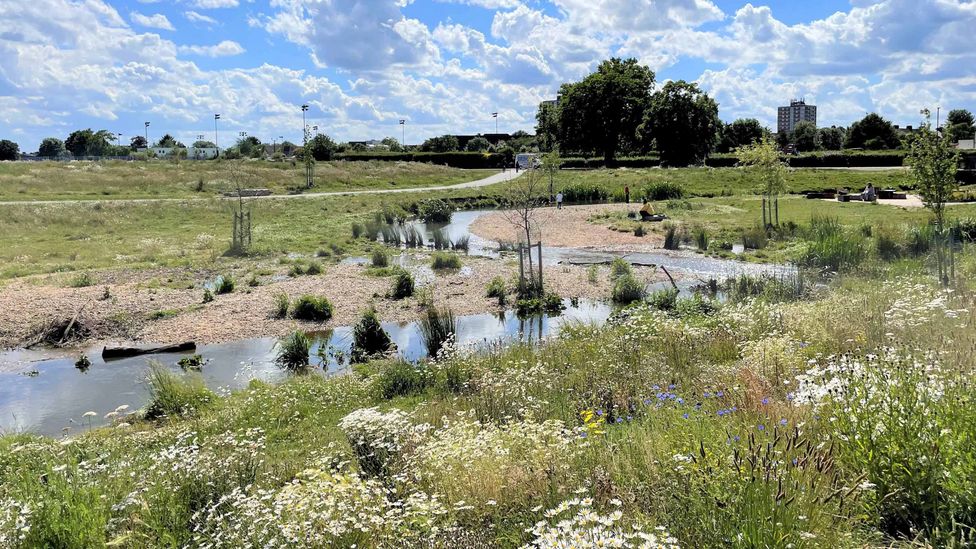Though most visitors to London think only of the River Thames, the city is a myriad of waterways. Old maps show a skein of rivers and brooks that provided "blue corridors" traversing the city for centuries, providing both sources of food and recreation. But as London boomed, these waterways faded from consciousness – encased by walls, turned into polluted backwaters or simply covered over to run unseen beneath busy streets.
But these "secret" rivers are imprinted on London's geography. Marylebone started life as St Mary by the bourne (an old name for a watercourse, in this case the Tyburn); while Bayswater, Knightsbridge, Westbourne and Holborn are all named by waterways that ran through them. Deptford was the site of a deep ford over the Ravensbourne, while Wandsworth is named after the River Wandle. East Ham and West Ham get their names from an old word for an area between rivers (hamm) – in their case, the Lea and the Roding. And while Britain's leading newspapers have left Fleet Street, the River Fleet still runs beneath.
"London should really be one massive wetland – a salt marsh on an estuary," said Will Oliver, a development manager at Thames21, a charity helping guide 40-plus river restorations. Thanks to the organisation's efforts alongside other groups, buried rivers have returned to the light, while others are being rewilded in ways that will improve the lives and environment of millions of people, as well as provide a key boost for nature.
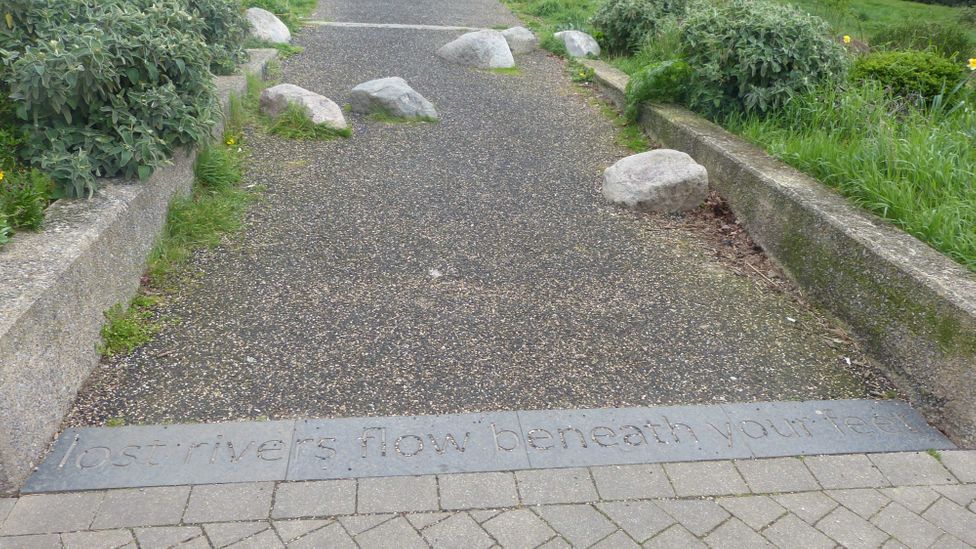
Many of London's rivers were covered over or converted into sewers (Credit: Norman Miller)
Take the Wildlife Gardeners of Haggerston, who are revitalising the Old Lea river at Hackney Marshes in east London. I arrived here through traffic-swirled streets, then walked across a vast expanse of park whose principal signs of life were dozens of football pitches. But along one edge, a line of trees concealed an ancient river that felt like a piece of rural England secreted into grim London vistas. Within minutes of arriving, I was startled to have seen egrets and kingfishers swooping past.
How to get involved
Across London, ongoing river restoration projects offer volunteering opportunities for visitors:
The Zoological Society of London (ZSL) regularly enlist citizen scientist volunteers to help for anything from a few hours to days in ongoing river conservation work across London.
The Conservation Volunteers (TCV) are looking for people to help restore a 3km blue-green corridor along the River Crane, close to Heathrow airport in West London.
Various canals also form a part of London's "secret" network of waterways, and The Canal River Trust have regular callouts for volunteers to carry out restoration work.
The Haringey Water Squad meet weekly at various north London locations to work on waterways like the Moselle Brook.
Esther Adelman, co-founder of the Haggerston volunteer group, explained some of the key work they are doing here. "We change the river flow and get rid of invasive habitats," she said, pointing to fallen trees that have been used to create partial river barriers – called berms – that add beneficial complexity to the water flow. "This creates a variety of habitats, such as areas of gravel where fish spawn," said Adelman. "We are imitating natural processes – like human beavers."
Gideon Corby, another Old Lea volunteer and habitat manager at the nearby Kingsland Basin Nature Reserve in Hackney, explained how planting reeds cleans the river by drawing pollutants like phosphates and heavy metals into their roots.
Adelman added, her voice filled with a mix of hope and quiet confidence: "We hope eventually the Lea will become home to otters."
Between 2020 and 2022, meanwhile, Thames River Trust trained around 100 citizen science volunteers to survey eels during the Thames Catchment Community Eels Project. As well as counting eels on a clutch of London's secluded backwater rivers known only really to those who live close by – like the Mole, Kennet, Pang Ravensbourne and Brent – the project worked with 22 schools to deliver workshops, plus guided riverbank walks and wades. It even created an eel-based online game for children.
As part of surveying an impressive 107km of river, the volunteers recorded 119 barriers hindering eel movement – 66 previously undocumented. This has helped create strategies to support this iconic but endangered species. Similarly, the River Hogsmill Connectivity Project spurred the removal of 17 out of 18 obstacles on this west London waterway, making it a far easier commuter route for fish.
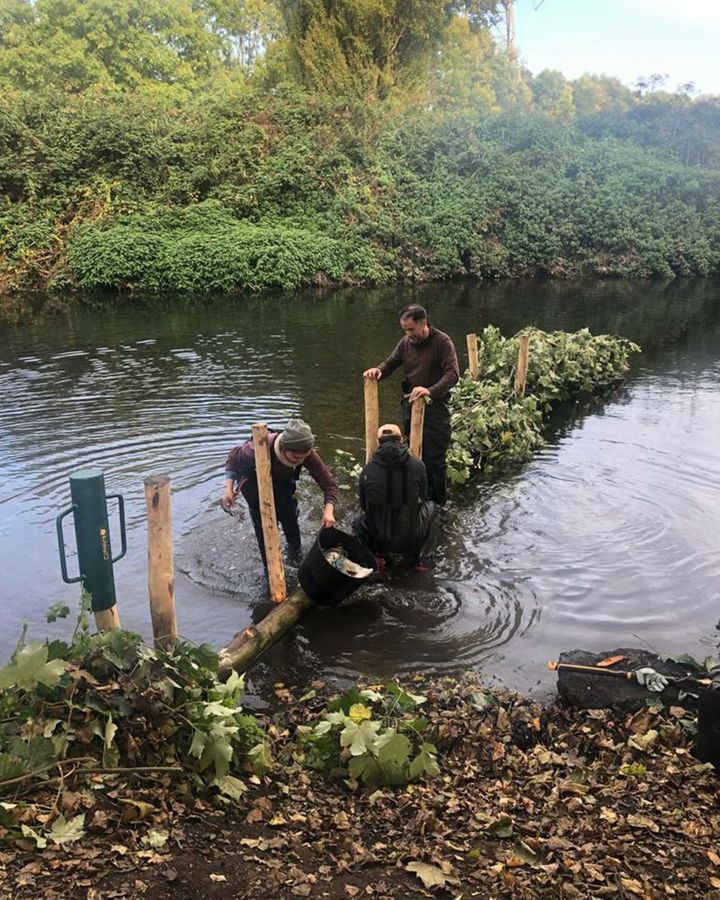
Woody debris placed around a fallen tree in the Old Lea creates complexity of flow and increases ecological habitats (Credit: Esther Adelman)
Freeing the river
Another inspiring form of restoration involves physically liberating waterways – like the Turkey Brook at Albany Park in north London, which for decades had been constrained to a narrow, ecologically hostile and dirty flow hemmed by concrete walls.
"We dug out the whole channel, broke the walls, and basically freed the river," said Michael Shorey, senior engineer for Enfield Council Watercourses Team. The result is a beautiful new wetland fed by several hundred metres of now gently babbling brook – a mini urban Eden that is home to myriad river creatures, birds, water plants and wildflowers.
Shorey pointed to places where the brook has created new channels and a small gravel beach. "We wanted it to take on its own course, to naturalise," he said. "But it will move, and we are going to get drone footage in coming years to see how it changes."
Creating these new wetlands also helps reduce flood risks across London, by providing areas that can naturally hold excess water from extreme rainfall increasingly linked to climate change. A key example is the Firs Farm Wetlands created after the rediscovery of Moore Brooke. Found buried within a wilderness in a little-used park in the north London borough of Enfield, this "lost" tributary of Pymmes Brook – itself a tributary of the Lea – was freed by Enfield's watercourse team to create a 3,300 sq m wetland area that Shorey said has significantly reduced flood risk for thousands of people in the area. Newly planted reeds, meanwhile, have also slashed water pollution levels, with phosphate levels alone down 70%.
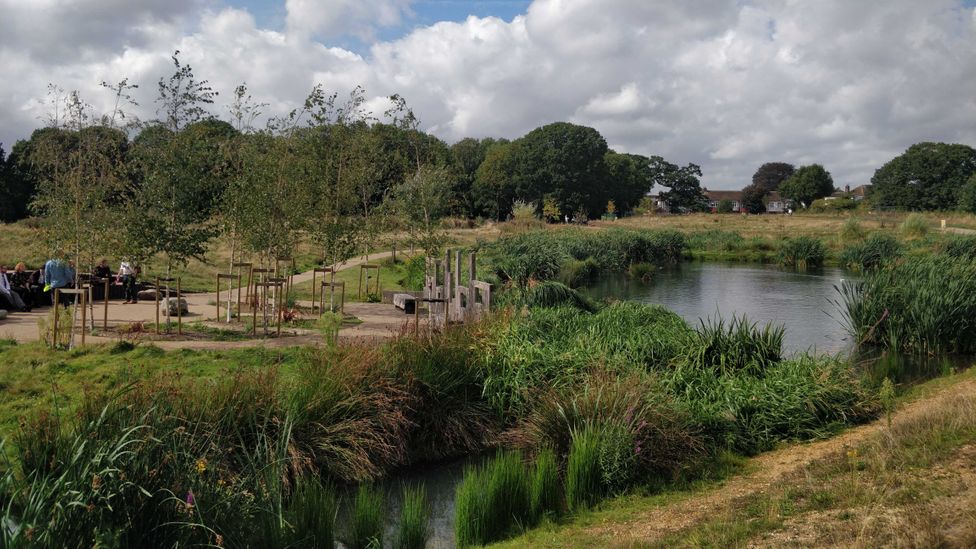
Firs Farm Wetlands stores 30,000 cubic metres of flood water, helping to protect local properties from flooding (Credit: Enfield Council)
Community benefits
London's river restorations are boosting wider community wellbeing too, with schools using restored banks and new wetlands for hands-on, feet-wet education. "This was just fields before, where kids could run around – but not learn anything," said Shorey about Albany Park. "Now they come down to the water to see what's going on."
This was just fields before, where kids could run around – but not learn anything. Now they come down to the water to see what's going on
Such public benefits are an immeasurable but vital part of London's river restorations. "The work draws so many people," said Caroline Woodley, Hackney Council Cabinet member for families, parks and leisure. "It's boosting wellbeing generally through connection with nature, along with education around biodiversity and rewilding."
Take the major restorations around South London's River Wandle that saw it go from being declared biologically dead in the 1960s to becoming the first river in London to receive the EU's "Good Ecological Potential" tag following work carried out by hundreds of SERT volunteers.
The Wandle's historic renown as a trout river also prompted a local Trout in the Classroom programme in which local school pupils raised trout eggs for release in the river – spurring brown trout to begin breeding again in the Wandle for the first time in more than 80 years.
The Old Lea restoration, meanwhile, has inspired innovative arts in the shape of Surface Tension – a Thames21 commission that saw musician and artist Rob St John create a 2015 album of music and field recordings taken along the Lea, accompanied by a book of writing and photographs.
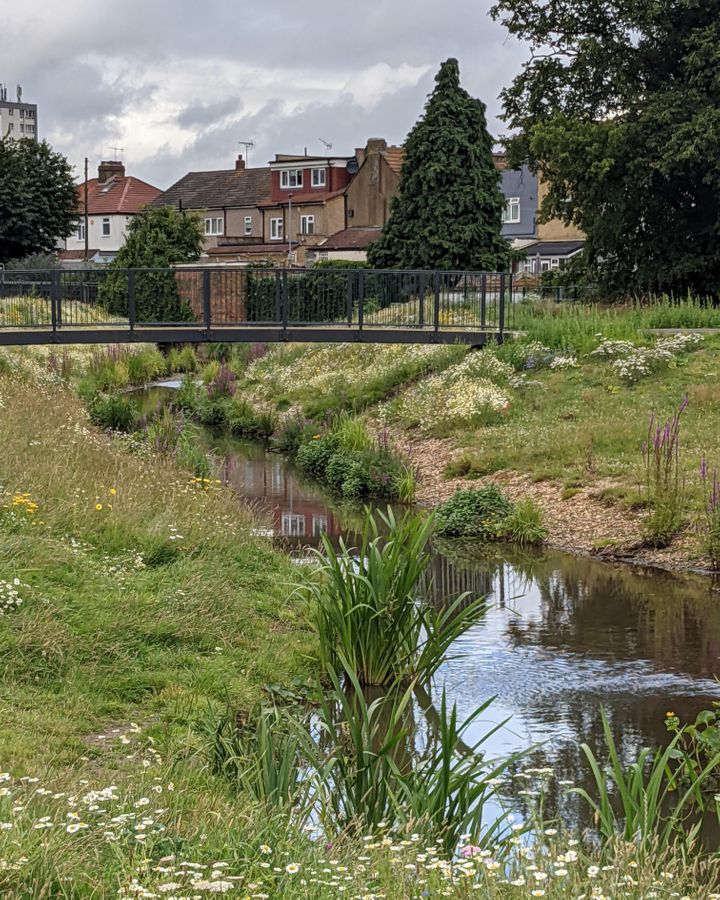
Before its restoration, Turkey Brook was confined in a steep-sided concrete channel along the edge of Albany Park in north London (Credit: Enfield Council)
Restoration rolling on
In 2022, the annual London River Week event published an interactive map that highlighted 144 spots across the city ripe for further restoration, building on the 45km of rivers restored since 2000. Projects include Rewilding The Rom that will reconnect a section of the natural floodplain of the river that named the East London neighbourhood of Romford, recreating part of its former expansive floodplain.
Ahead of the 2023 London Rivers Week (29 May-4 June), a target has been set to restore and rewild a further 5km of waterway each year, which would restore one-third of London's 640km of waterways by 2050.
The effort itself is transforming the lives of those who take part, with a SERT study finding a massive 673% increase in numbers of volunteers between 2013 and 2019. One of those people is professional horticulturist – and Wildlife Gardener of Haggerston volunteer – Nina Hundt, who chatted to me in a break from tasks on the Old Lea. "My whole focus has changed towards native species and nature recovery," she said. "You do something good, and something good comes out of it."
---
Join more than three million BBC Travel fans by liking us on Facebook, or follow us on Twitter and Instagram.
If you liked this story, sign up for the weekly bbc.com features newsletter called "The Essential List". A handpicked selection of stories from BBC Future, Culture, Worklife and Travel, delivered to your inbox every Friday.
